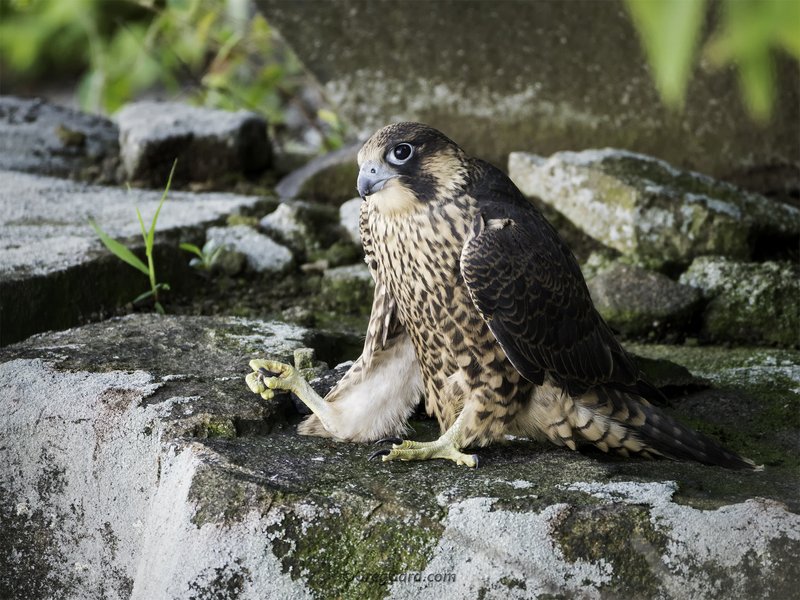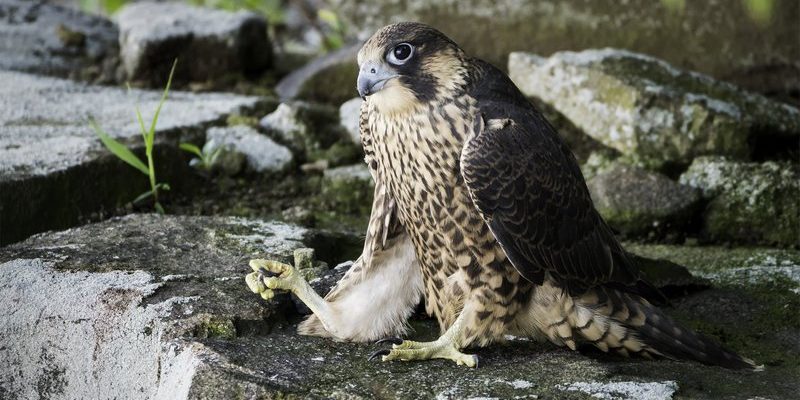
Raising young can be a bit like hosting a wild party: there’s excitement, noise, and plenty of love. In the case of peregrine falcons, the stakes are high, and the lessons learned in the nest are vital for survival. So, let’s dive into the remarkable story of how peregrine falcons nurture their offspring in the wild, exploring their nesting habits, feeding strategies, and the roles each parent plays in this avian family dynamic.
Nesting Habits: Where the Journey Begins
Peregrine falcons are known for their unique nesting habits. They don’t build traditional nests like many other birds. Instead, they choose high rocky cliffs or the ledges of tall buildings—think of them as the penthouses of the bird world. These locations provide safety from predators and a great vantage point for spotting food.
Typically, they will scavenge a shallow scrape in the ground or ledge, creating a small depression where they can lay their eggs. It’s a bit like a cozy nest-in-the-sky, far removed from ground dangers. The mother usually lays about three to four eggs, and these eggs are often speckled to help camouflage them against the rocky surfaces.
Once the eggs are laid, both parents take turns incubating them. Incubation lasts about 33 to 35 days, and during this time, each parent fiercely guards the nest, ensuring no predators can sneak up and cause trouble. So, you might say that the parenting kicks off even before the chicks make their grand entrance.
Incubation Period: Teamwork Makes the Dream Work
During the incubation period, teamwork is essential. The male falcon will typically provide food for the female as she sits on the eggs, and when the female takes a short break to stretch her wings, the male swaps places. This shared responsibility embodies the harmony of partnership in the wild.
Let’s imagine this scene: on a sunny morning, the male swoops in with a freshly caught pigeon, his feathers shimmering in the sunlight. He delicately offers it to the female, then takes her place to keep the eggs warm. This cooperation allows them to share the burden of parenting, ensuring both their comfort and the safety of their future chicks.
As the hatching day approaches, you can almost feel the excitement in the air—after weeks of careful watching and waiting, those little chicks are ready to greet the world!
The Hatching Process: Welcome to the World
Once the chicks begin to hatch, it’s quite a sight to see! The eggs typically hatch in a sequence over a few days, which means that not all chicks emerge at the same time. The first to hatch is usually the strongest, and it can help the others break free from their shells. This process is known as synchronous hatching.
When the cute little chicks finally break free, they’re covered in soft down feathers and are quite helpless, like tiny, fluffy blobs. The parents are right there to help them, keeping them warm and ensuring they find their footing in the nest. This stage is critical because the chicks are vulnerable to the elements and predators.
As they grow, their little personalities begin to shine, and you might catch glimpses of fighting for space in the nest, stretching their wings, or even entertaining their parents with a clumsy hop. It’s a moment of pure joy, interspersed with the daily challenges of survival.
Feeding the Chicks: A Parent’s Duty
Feeding time is equally fascinating and crucial for the growing chicks. Once the little peregrines hatch, they rely entirely on their parents for food. The adult falcons are expert hunters, using their speed and agility to catch a variety of prey, mainly birds, but sometimes small mammals.
Here’s how it works: the male falcon usually does most of the hunting while the female stays with the young. After catching prey, he brings it back to the nest and tears it into smaller pieces. This might feel like a messy dinner table, but it’s essential to make sure the chicks are getting the nutrition they need to grow strong and healthy.
You might be wondering, “What if the prey they catch is too large?” Well, the parents are skilled at managing this. They know exactly what their chicks can handle and will adapt their hunting strategies accordingly. It’s like having a chef who can tailor dishes perfectly for each guest!
Teaching Survival Skills: The Next Step
As the chicks grow, they start to learn vital survival skills. You can think of this phase as their own little school, where their parents are the patient teachers guiding them along the way. Around three to four weeks old, the chicks begin to flap their wings and practice hopping around the nest.
This is essential preparation for taking their first flight. The parents encourage this behavior, and on calm days, they may even draw attention to their own flying skills to inspire the young falcons. You might catch a glimpse of the adults performing aerial displays, gliding gracefully while calling out to their chicks.
When the time comes for the first flight, known as fledging, it’s both an exciting and nerve-wracking moment. With a gentle push from their parents and a lot of instinct, the young falcons leap from the nest and soar into the air for the first time. It’s a moment of freedom but also one where they’ll learn the importance of returning home.
Fledging and Independence: Time to Spread Their Wings
After fledging, the chicks don’t immediately become independent. In fact, they stay close to their parents for several weeks, perfecting their flying and hunting skills. During this phase, they often rely on their parents for food, gradually learning to hunt on their own.
Imagine a young falcon clumsily trying to catch its first meal, missing a few times, but each try brings more confidence. This hands-on experience is crucial for their survival, as it sets the stage for their independence. The parents keep an eye on them, offering encouragement and occasional guidance for successful hunting.
Eventually, the time comes when the young falcons must venture out on their own. Leaving the nest and their parental care is a natural part of growing up. While it may be bittersweet, it’s also vital for the continuation of the species.
Peregrine falcons are remarkable parents, showing us that raising young is a blend of teamwork, teaching, and nurturing. From the nesting process to the fledging stage, every step is a testament to their dedication and instinct to ensure their young thrive in the wild.
Seeing these falcons in action can remind us of our own family dynamics, where love and support play a crucial role in helping the next generation take flight. So, the next time you spot a peregrine falcon soaring overhead, remember that there’s a whole lot of heart behind those sharp wings and swift dives—a beautiful story of life and perseverance in the wild.

